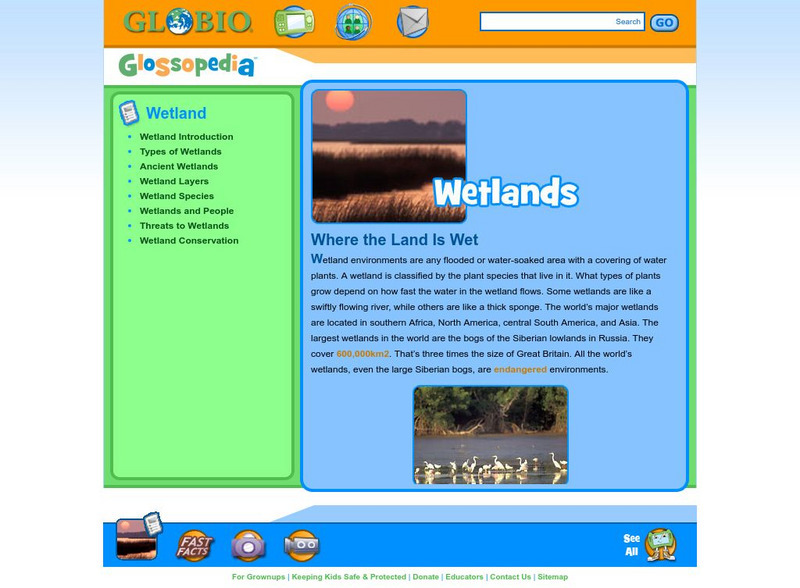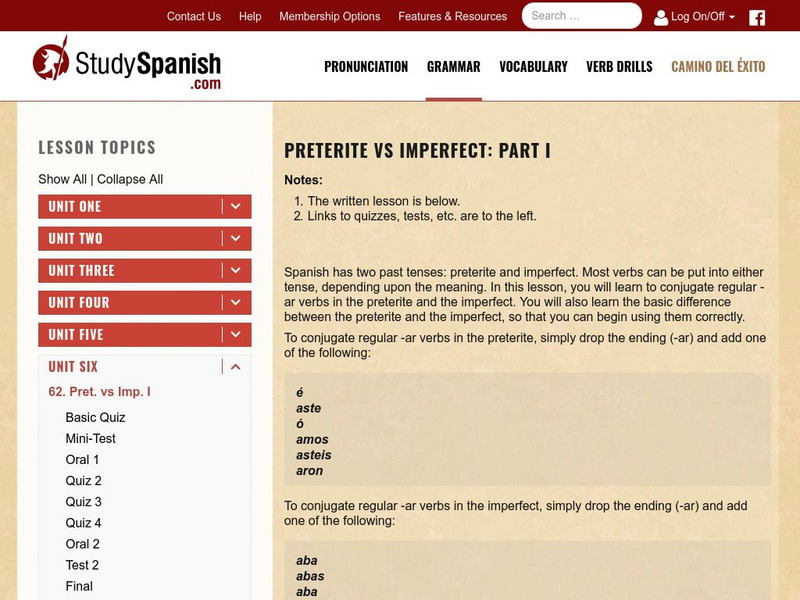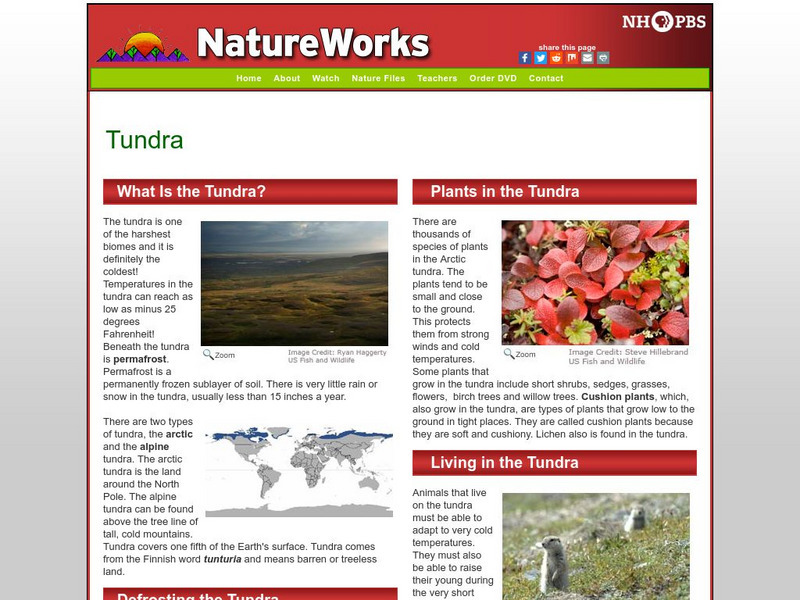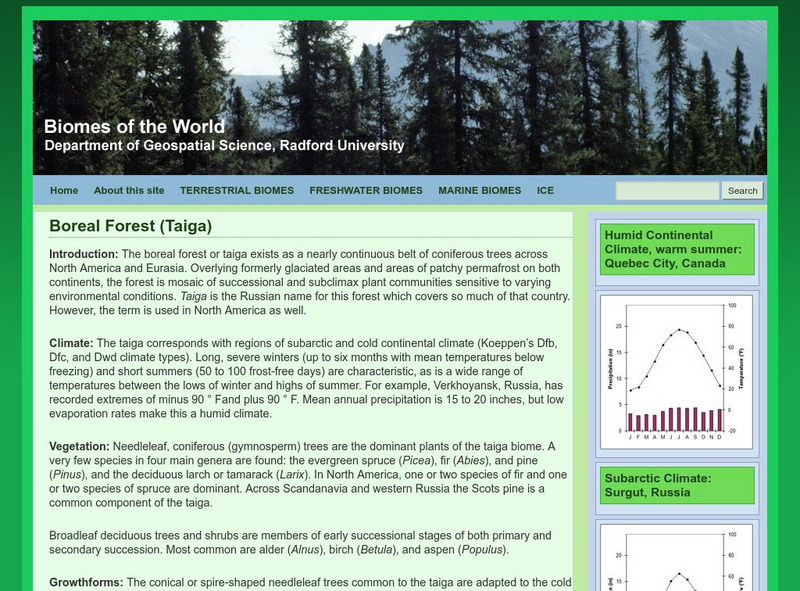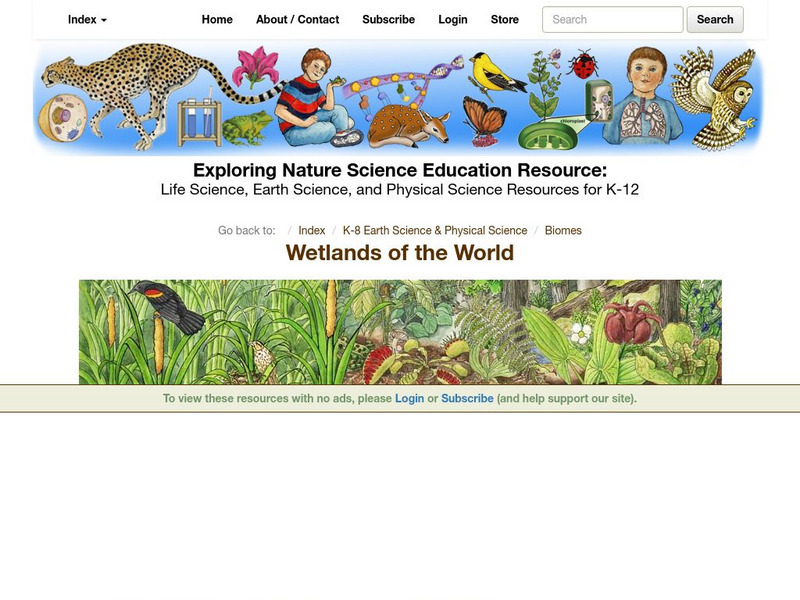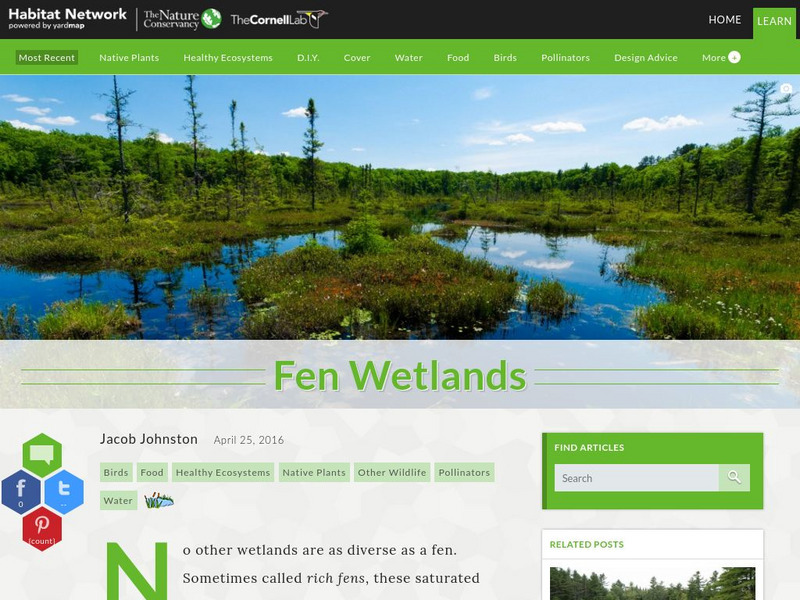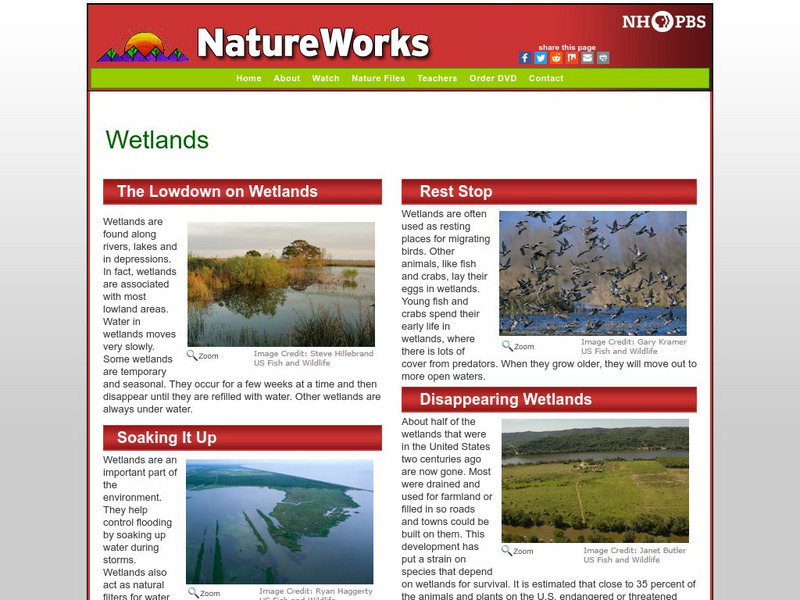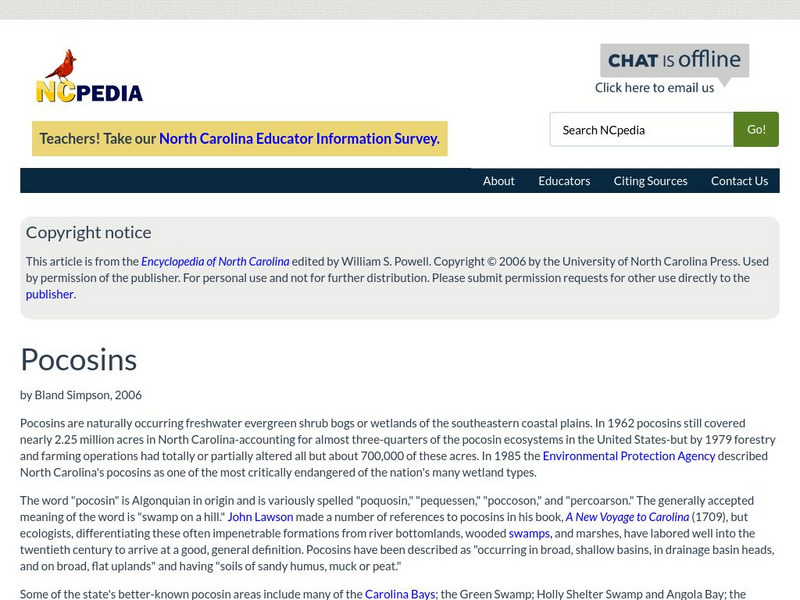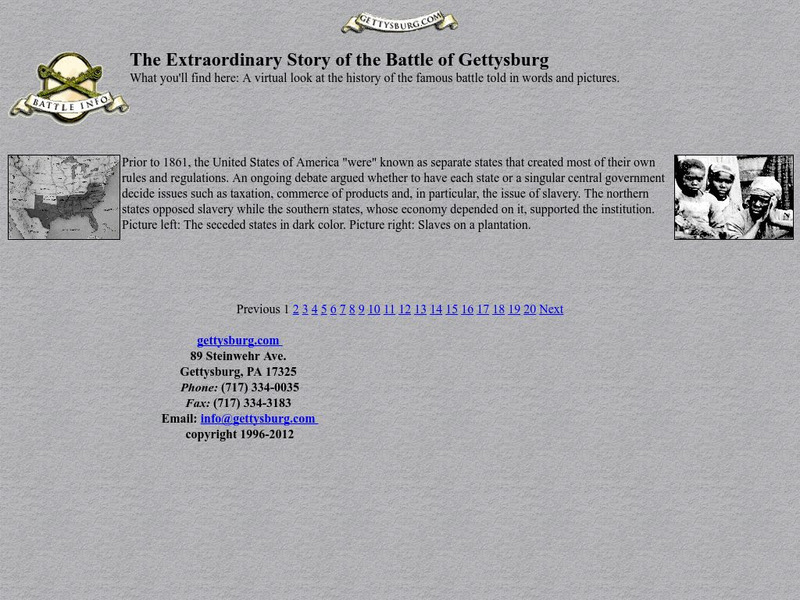The Wild Classroom
The Wild Classroom: Biomes of the World: Wetlands Biome
Learn about wetlands ecosystems. Find out about plants, animals, adaptations, and conservation efforts.
US Fish and Wildlife Service
U.s. Fish and Wildlife Service: Endangered Species Coloring Book [Pdf]
The U.S Fish and Wildlife Service presents The Endangered Species Coloring Book. A PDF file filled with pictures and descriptions of eight endangered plant and animals.
Globio
Glossopedia: Wetland
Wetlands are an integral piece of Earth's ecology. Wetland structure is described as well as their role in the health of plants and animals. Issues concerning destruction and preservation efforts also discussed.
AdLit
Ad lit.org: Key Literacy Component: Fluency
Fluent readers can read text accurately, smoothly, and with good comprehension. Students who get bogged down in the mechanics of reading have trouble with this skill. With proper instruction, struggling readers can improve their fluency.
Science Education Resource Center at Carleton College
Serc: Investigating Aquatic Ecosystems: Macroinvertebrates and Water Quality
Students will investigate three aquatic ecosystems (pond, stream, bog) to determine the relative pollution index and the water quality of each ecosystem. They will collect and analyze the benthic organisms found in each system and...
Study Languages
Study Spanish: Preterite vs Imperfect Part I
This site is an introductory lesson to the preterite and imperfect past tenses. The regular conjugations of each are presented, with brief general rules for their use. This is a great introduction without getting bogged down in all the...
Council for Economic Education
Econ Ed Link: There Is Something in the Water
The United States is losing 60,000 acres of wetlands each year. Is this good or bad? Does anyone really want to live in swamps, fens, bogs, and marshes? Or is it better economics to drain the wetlands for other purposes like agricultural...
Alabama Learning Exchange
Alex: Little River Canyon's Carnivorous Green Pitcher Plants
A digital slide program introduces the Green Pitcher Plant (Sarracenia oreophila) to the learners. Students use a model of the Green Pitcher Plant and plastic insects to role play. They will tell the story of habitat adaptation and...
PBS
Nh Pbs: Nature Works: Swamps
What characteristics make a swamp a swamp? This site features information on the Great Dismal Swamp, Conifer Swamps, Okefenokee Swamps, Shrub Swamps, Hardwood Swamps, and Cypress Swamps. This site also offers some great photographs of...
PBS
Nh Pbs: Nature Works: Tundra
Can you name the two types of tundra? Find the answer to this question and many more when you explore this educational resource. The content of this site includes a look at this biome's characteristics, plant life, animal life and more....
Missouri Botanical Garden
Missouri Botanical Garden: Fresh Water Wetlands
What are fresh water wetlands? What creatures live in a wetland? Are wetlands in danger? Find out at this informative site. Use the toolbar at the left to navigate through the site.
Other
Radford University: Taiga or Boreal Forest
This site provides a thorough fact sheet of a taiga forest (or boreal forest as it is otherwise known). Content includes a look at the forest climate, vegetation, growth forms, and soil. Additional information can be found on the alpine...
Exploring Nature
Exploring Nature Educational Resource: Wetlands of the World
A set of illustrated fact pages and activity sheets on different wetlands ecosystems, e.g. the Florida Everglades and Chesapeake Bay.
A-Z Animals
A Z Animals: Reference: Habitats: Swamps and Wetlands
Learn about the plants, animals, and other characteristics of some wetland ecosystems.
Cornell Lab of Ornithology
Habitat Network: Fen Wetlands
Sometimes called rich fens, find out about these saturated environments that are fed with mineral-rich groundwater and occur at low points or slopes in the landscape where the soil surface is intercepted by the water table.
PBS
Nh Pbs: Nature Works: Wetlands
Did you know that wetlands are frequently used as resting stops for migrating birds? This is just one of the many interesting facts found within this educational resource. This site features information on the characteristics, types,...
Smithsonian Institution
National Museum of Natural History: American Mammals: Taiga Vole
Taiga Voles eat mostly grass, but include some other plant matter in their diets. They inhabit forest habitats near streams and bogs, using both underground and surface runways. Learn more about the Microtus xanthognathus, more commonly...
State Library of North Carolina
N Cpedia: Pocosins
Pocosins are naturally occurring freshwater evergreen shrub bogs or wetlands of the southeastern coastal plains. In 1962 pocosins still covered nearly 2.25 million acres in North Carolina-accounting for almost three-quarters of the...
Curated OER
Unesco: Russian Federation: Virgin Komi Forests
The Virgin Komi Forests cover 3.28 million ha of tundra and mountain tundra in the Urals, as well as one of the most extensive areas of virgin boreal forest remaining in Europe. This vast area of conifers, aspens, birches, peat bogs,...
Other
Battle of Gettysburg: Battlefield Maps
This site provides a complete map of the battle fought at Gettysburg.
Other
Gettysburg.com: Gettysburg
This site details the Battle of Gettysburg. Includes pictures and information about the residents of Gettysburg at the time.
Other popular searches
- Bog Mummies
- Bog Bodies
- Media Education Bogging
- Cranberry Bog
- Bog Land
- Bog Ecology
- Bog Communities
- Bog Simulation
- Bog Turtle
- Bog Bodies Lindow Man
- Afro in the Bog
- Bog Turtle Niche

![U.s. Fish and Wildlife Service: Endangered Species Coloring Book [Pdf] Handout U.s. Fish and Wildlife Service: Endangered Species Coloring Book [Pdf] Handout](https://d15y2dacu3jp90.cloudfront.net/images/attachment_defaults/resource/large/FPO-knovation.png)
